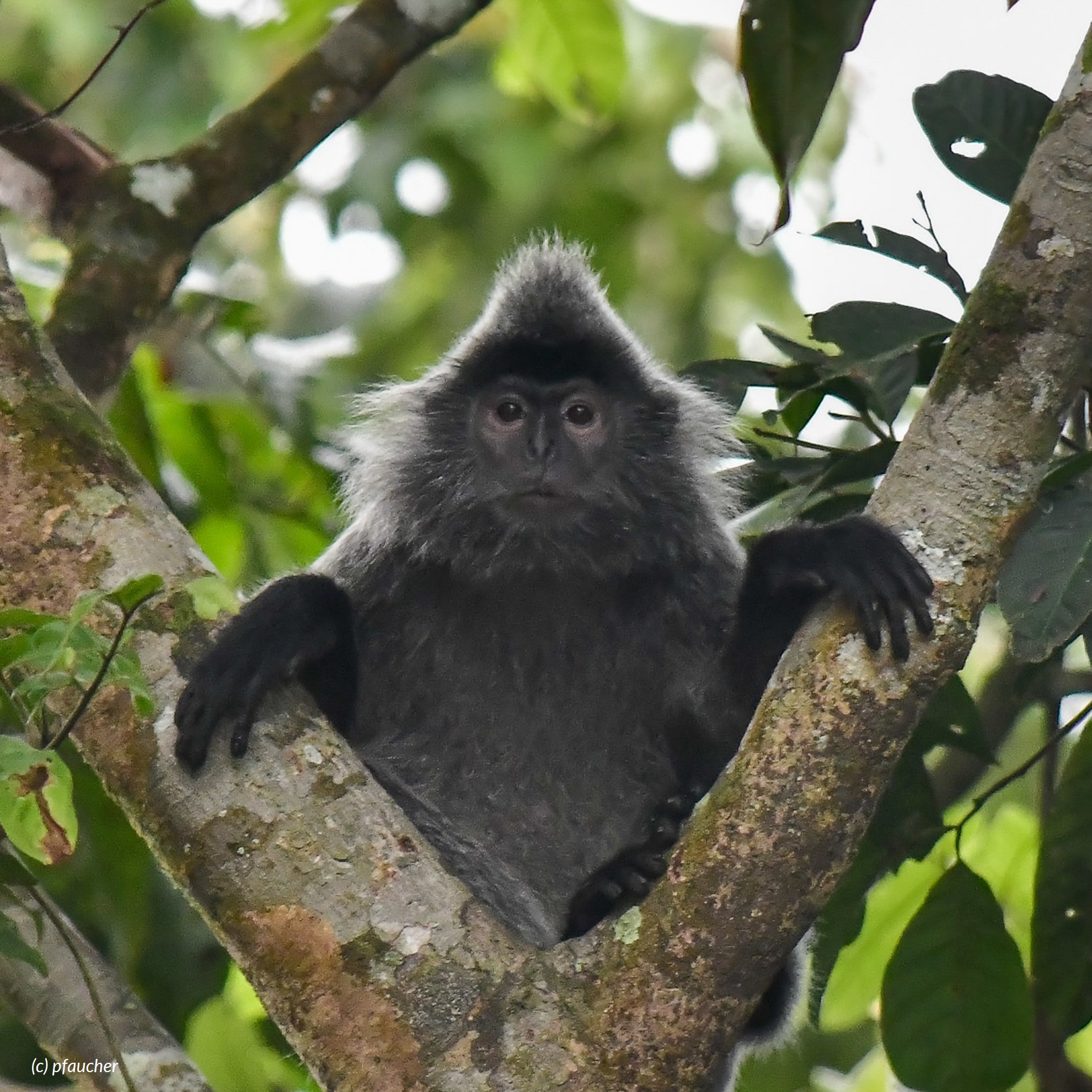
National Parks/ Sanctuaries
-
Common Names
silvered langur, silvered leaf monkey, silvered monkey, silvery lutung
Regions
IndonesiaBrunei DarussalamMalaysia
Population
Approximately 10,000 individuals
Habitat
Tropical rainforests with dense canopy cover and abundant fruiting trees.
Weight(in lbs) and Life Span
15, and 20
Regions
Indonesia, Brunei Darussalam, Malaysia
The Silvery Langur (Trachypithecus cristatus) is a genteel, medium-sized Old World monkey, clad in silky silver-gray fur with darker underlayers that shimmer under sunlight. Distinguished by a pointed crest and tufted face hairs, they possess long tails exceeding body length and hairless dark limbs. These arboreal, diurnal primates live in harem-style groups (one male with multiple females and offspring), exhibit cooperative infant care, and communicate with a variety of soft vocalizations. Their diet is strongly folivorous, supported by a complex multi-chambered stomach and extended gut to process tough leaves efficiently. Reproduction occurs year-round with a gestation of ~181–200 days, and infants—born with striking orange fur—are cared for communally and weaned by 18 months. Though once more widespread, populations face pressures from habitat loss, fragmentation, and hunting. Recent surveys (e.g., South Sumatra) suggest localized numbers in the hundreds to low thousands, but overall range-wide numbers remain imprecise. Conservation hinges on habitat protection, stringent controls on land conversion, and enforcement of hunting restrictions.
Activity Instructions
- Draw the Animal: Use the next page to draw a picture of the animal. Use your imagination and make it colorful!
- Write an Essay: Write a short essay about the conservation efforts to save this animal. Here are some questions to guide you:
- Why is this species important in its ecosystem?
- What are the threats it faces, and how can we help?
- What do you find most interesting about this species?



